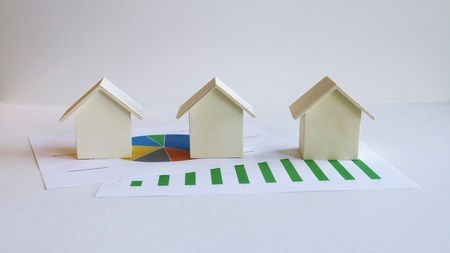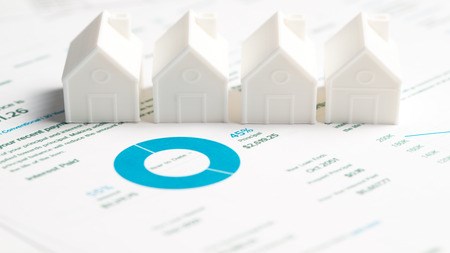This is not the ‘ultimate’ guide because the property market goes through many cycles which are impacted by a number of factors, but it does give you working knowledge about how to invest in multiple properties and build a portfolio with confidence.
Part One: The basic strategy
In theory, all you need to be able to call yourself a property investor, is to own one property over and above the one you reside in, and rent it out. If you are able to manage that well, you have an asset that brings in money each month, which in time will pay off what you owe on the property allowing you to earn a passive income.
What is a passive income?
A passive income refers to money you earn with very little effort or work involved. Over time, and if you have built up a good portfolio of property investments you may have enough money coming in each month to retire and, more importantly, retire early. This is a very good reason to invest in property because most people work hard their whole lives and find their traditional retirement payouts and savings aren’t sufficient to maintain the lifestyle that they are used to.
Who are property investors?
A property investor can be anyone of any age, but essentially there are five types:
First-time home buyer: those who are buying a property for the first time as their primary residence.
The empty-nester: Those whose children have left home and want a property that isn’t as big, and is easier to manage.
The upgrading family: Those whose family has grown and are looking for more space. It could also be the multi-generational family, who buy a large property together, in which they can all live.
The first-time landlord: Buys a second property to rent out and earn a passive income.
The experienced investor: Someone who has bought multiple properties, and earning a steady income stream from renting those out.
From this list you want to progress from being a homeowner to a first-time landlord, to ultimately be an experienced landlord who owns multiple properties as a property investor, earning a substantial passive income from which you can live without dependence on a salary.
When to start?
It doesn’t matter whether you are 18 or 80, your personal circumstances, your shortcomings, your financial status or your lifestyle, you can invest in property. The most important part of this is to have some financial literacy such as understanding where your money goes each month, and to at least have some savings. It’s important to keep yourself focused on the end-goal, which is to ensure that you can take care of yourself when you retire so that you can enjoy the rest of your days without compromising your financial health.
How to start
Overarching goal: To build a portfolio of properties that will bring in a passive income so that you can retire early or retire without financial worries.
Set your immediate goal: Do not over-stretch. If you say you want to own 100 properties and you are starting with zero cash, it will seem like too big a goal, which can be discouraging and you may self-sabotage. Be precise! For example, you want to own one rental property in the next two years.
Timeframe: As in the example, you need to decide by when you want to reach your goal, and this should be reasonable and achievable.
When these three points are aligned you must remain focused and motivated. Once you have achieved your first goal, you can set new goals and timeframes, which, for example, may be to own three properties in five years. And the best is that you will learn in this Private Property Blueprint, how to use those properties to buy new one’s.
Simple strategy
You need to come up with a simple strategy that will help keep you motivated:
- Goal.
- Type of property.
- Capital (money) required.
- Effort and time needed.
- Expected return on investment (ROI).
Here is an example:
Goal: To buy one property within the next two years.
Type: A one-bedroomed apartment.
Capital required: Moderate.
Effort and time: Minimal.
ROI: After the monthly home loan repayment, which is paid for from the rent, what is left over that you can save?
Your financial health Once you have the goal and strategy in place you should take a serious look at your monthly and annual expenses by designing a spreadsheet. There are innumerable resources on the web that will show you how to do a spreadsheet, which essentially means listing every cent you earn, and every cent you spend. This requires absolute honesty so that you can clearly see where you may be wasting money.
Most people have costs associated with the roof over their heads such as a home loan or rent; utilities; food and household cleaning products; car repayments and associated fuel, maintenance, and insurance costs; medical and educational; phone and tv subscriptions; and insurance and retirement plans. Each individual may also have other commitments such as paying off student loans, transport, care-giving or housekeeping, animal care and so on.
Many people forget that they also have annual subscriptions, so that will need to be factored into the outgoing expenses.
When you compare your outgoings to your incomings, what is left over is often spent on ‘fun’.
When you have such a spreadsheet, you will realise how much money you could be saving. It may show that you are spending a thousand or more Rands on buying coffee or take-aways. If you are prepared to make a few sacrifices, that money can be redirected to a savings account where you can earn interest enough to be able to save for a deposit on your first Buy-to-Rent property.
Beyond the pain points
It’s important not to beat yourself up about any waste, but rather to acknowledge where you can make changes that will help you achieve your property dreams, and potentially become wealthy.
Acknowledge your mistakes, be honest about assessing your financial health and work towards breaking any destructive habits that impact negatively.
Believe you can make the right decisions and take control of your future by setting new realistic and achievable goals.
Stay focused on your goals and become knowledge-hungry about property.
Share your goals with family if they live with you, so they too can contribute to saving money or better understand why everyone may have to make short-term sacrifices.
Visualise your future as a wealthy investor.




